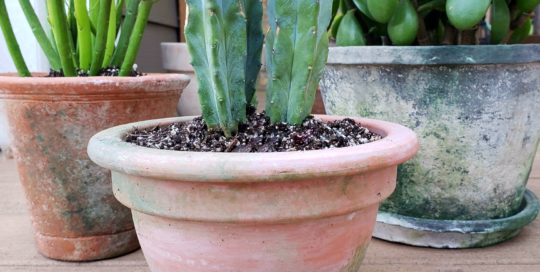How To Grow Your Plant On A Wooden Plank
Views: 7758

The vertical houseplant trend is going strong. More plants on planks are showing up in garden centers and on social media. Vining plants are meant to climb. In the wild, they grow strong aerial roots and attach themselves to trees so they can access more sunlight. When you grow your houseplant on a wooden plank, leaf size increases and aerial roots climb like little monkey hands. I assumed cultivating a plant on a plank was complicated, but found out it is easy. You can rig a simple vertical support set-up in just minutes with a few household items. My manjula pothos was the perfect candidate for a wooden plank. It hadn’t grown in months, but when I added a few chopsticks for support it perked up. Chopsticks only go so far. Here’s how to grow your plant on a wooden plank.
Step 1 – Organize The Stems
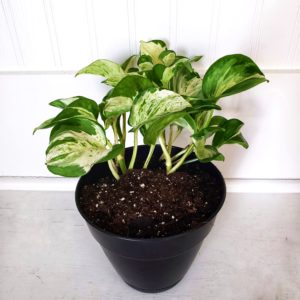
Vines should rest on or near the wooden plank. Loosen the soil and line the stems as close to one end of the pot as possible. This way your vines won’t have to stretch across the pot to find their support system. Make sure the node end is facing the board so you won’t have to twist the stems around for roots to latch onto the board.
Step 2 – Secure The Board
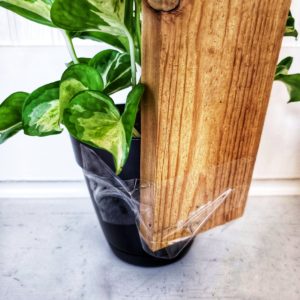
It is okay to place the board directly in the soil. My particular board was a bit short and I wanted every inch available for the pothos. I secured the board to the back of the plastic nursery pot with strong packing tape – a quick and cheap solution. This shortcut works well for smaller plants, but if your plant is larger it will need more of an anchor. In these cases you can drop the large board into the soil, or just lean it against a wall (and plan not to move your plant).
Step 3 – Tape Nodes To The Board
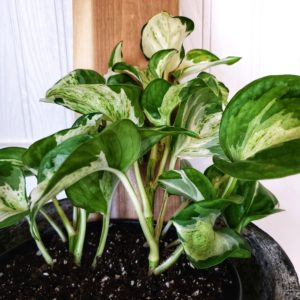
A regular piece of tape, the kind you would wrap a gift with, will gently anchor the stem to the board and encourage roots to cling. Make sure to tape the node-side to the board, so roots can grasp the wooden plank. Also, be sure to leave some airspace around the sides of the stem so it can breathe. Eventually, you can remove this tape because the roots will latch on to the wooden plank.
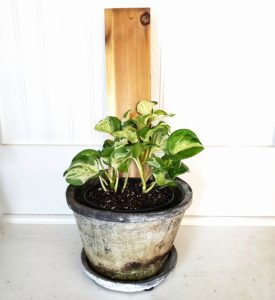
Clay Pot For Coverage
An Easier Alternative
This simple wooden plank and tape method saves time and money, but for an easier alternative you can purchase a wooden trellis specifically made for vertical growing. Treleaf makes an attractive cedar board with rot resistant stakes you can drive right in the soil. This saves you the trouble of securing a board to the back of your pot and it looks great. I used a Treleaf trellis for another plant and it worked perfectly.
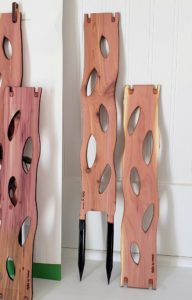
Treleaf Trellis
Spring is the perfect time to experiment. Root growth is strong and sunlight is abundant. Experiment with vertical growing and take your houseplant to new heights.
Meet Paula Palma
Paula has a teaching background in pilates, yoga, and meditation. She is currently studying biology as a prerequisite for further education. One of her favorite…
Paula's Recent Posts
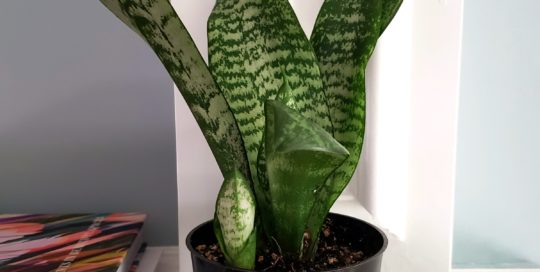
What To Do When You Inherit A Houseplant
